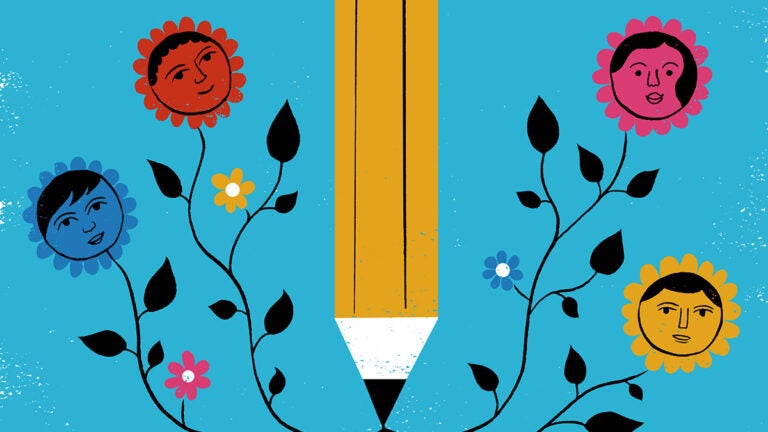
(Illustration/Hanna Barczyk)
Educational Equity is Good for All Kids— So We Must Do Everything We Can to Advance It
Poverty is not a learning disability. It’s a barrier to education that we can overcome together.
Equity has become one of those buzzwords that is used often, especially in the field of education, but it’s also a word that’s not widely understood.
As someone who understands the danger of complex topics being reduced to meaningless slogans — like “No Child Left Behind” — I’d like to offer a straightforward definition of the term and some clear ideas on how we can make it a reality for more kids in America.
Put most simply, when we refer to equity in education, we are compelled to acknowledge that to successfully educate all children, we must acknowledge their differences, build on their strengths and respond to needs — the ones in the classroom as well as their nonacademic social, psychological and emotional needs.
If we embrace this goal, then we must recognize that to educate all students, we first must know them. We must understand how they learn, what their interests and motivations are, and the hardships and challenges that they and their families must contend with. It also helps to know about their hopes and aspirations if we want to tap into their motivation.
The more we know about the students we serve, the more we’ll know about how to serve them.
Put simply: The more we know about the students we serve, the more we’ll know about how to serve them.
“If it’s that simple,” a reasonable person might say, “then why aren’t we doing a better job educating kids?” Actually, we do a fine job educating most affluent kids, especially those who come to school with their basic needs met.
We struggle when educating kids who come to school hungry, sick, poorly housed, in need of eyeglasses or even a hug. In fact, wherever poverty is concentrated in America, it usually turns out that schools and the students they serve typically don’t do very well. It is important to note that this is not because such children cannot learn. Poverty is not a learning disability, and we have considerable evidence that when we embrace equity in education and eliminate barriers to learning, we can serve all kinds of kids.
The simple steps to foster educational equity
Poor children tend to underperform in school because policymakers and educators haven’t devised or implemented plans to meet their needs. In fact, we’ve focused on the wrong things.
If we focus on creating the right conditions, we have strong evidence that all children, regardless of their income, race, language or circumstances, can learn and achieve.
We have known for some time that the kids with the greatest needs are typically the most difficult to serve. Throughout America, too often we fail to address their social, psychological and emotional needs, and we compound the challenge by focusing narrowly on academic achievement as measured by test scores. The good news is that if we focus on creating the right conditions, we have strong evidence that all children, regardless of their income, race, language or circumstances, can learn and achieve.
The challenge our policymakers haven’t been very good at addressing is ensuring that we create conditions in schools that are conducive to learning and healthy human development. This is actually not as difficult as it might seem.
As an analogy, I would suggest that we think about children the way we think about vegetables growing in a garden (I also happen to be a gardener). Every good gardener knows that if your veggies aren’t growing, you need to make sure that the right conditions are in place. They must receive sufficient water, adequate sunlight and fertilizer, and you must be attentive to pest control. In our classrooms, the essential conditions are safety, inclusion, stimulation and social and emotional support. When these conditions are present, children thrive — and they learn.
This is how we advance equity in education: by ensuring that the conditions essential to good teaching and learning are in place at every school for every child. We can do this. We’ve got to generate the will to make it happen.



